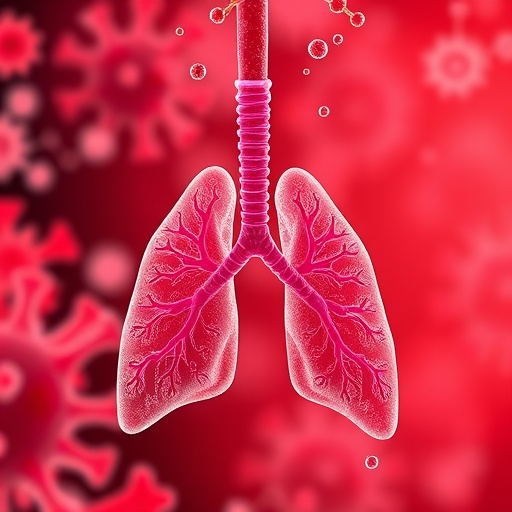Antidepressant prescribed to millions is ‘no better than placebo’ for children — with greater side effects – New York Post

Report on the Efficacy of Fluoxetine in Youth and Implications for Sustainable Development Goal 3
Executive Summary
Recent research analyzing clinical trials from 1997 to 2024 has called into question the efficacy of fluoxetine, a widely prescribed antidepressant for children and adolescents. The findings suggest the medication may offer no significant benefit over a placebo in treating pediatric depression. This report examines these findings and their profound implications for the achievement of Sustainable Development Goal 3 (SDG 3), which aims to ensure good health and well-being for all, with a specific focus on promoting mental health under Target 3.4.
Analysis of Recent Clinical Research
A comprehensive review conducted by researchers in the UK and Austria analyzed data from 12 major clinical trials involving fluoxetine use in young people. Fluoxetine, marketed as Prozac, is a first-line pharmacological treatment for pediatric depression and is the only antidepressant approved by the U.S. Food and Drug Administration (FDA) for children as young as eight.
The primary conclusion of the analysis is that the medication did not provide clinically meaningful benefits for reducing depressive symptoms in this demographic. Study authors noted that the drug was “no better than placebo,” raising critical questions about its widespread use and the alignment of current treatment protocols with global health objectives.
Implications for SDG 3: Good Health and Well-being
The study’s findings present a significant challenge to the advancement of SDG 3, particularly Target 3.4, which seeks to promote mental health and well-being. The reliance on a potentially ineffective pharmacological intervention for a vulnerable population undermines efforts to provide quality and effective healthcare.
Furthermore, the potential for adverse side effects directly conflicts with the goal of ensuring well-being. The risks associated with fluoxetine may outweigh its limited benefits, posing a direct threat to the health of young patients. Key concerns include:
- An increased risk of suicidal thoughts and behaviors, as noted in the FDA’s strongest safety alert (black box warning).
- Physical side effects such as weight gain and sleep disturbances.
- Cognitive effects, including trouble concentrating.
Ensuring that medical treatments for children are both safe and effective is a fundamental component of a robust healthcare system, which is a cornerstone for achieving SDG 3.
Statistical Context: The Youth Mental Health Crisis
The questions surrounding fluoxetine’s efficacy arise amidst a documented increase in mental health conditions among youth, a trend that further complicates the path to meeting SDG 3 targets. The scale of the issue is demonstrated by the following data points:
- Between 2016 and 2023, the rate of depression diagnoses among adolescents aged 12 to 17 increased by 45%.
- In 2023, 4.5 million young people experienced at least one major depressive episode.
- Coinciding with this trend, antidepressant prescriptions for individuals aged 12 to 25 rose by 63% between 2016 and 2022.
This data highlights an urgent need for evidence-based, safe, and effective mental health support systems for young people to make substantive progress on global health goals.
Recommendations and Cautions
While the research questions the benefits of fluoxetine, experts advise a cautious interpretation and a structured approach to any changes in treatment. The report underscores that abandoning ineffective treatments must not lead to an absence of care, which would also be detrimental to achieving SDG 3.
The following recommendations were emphasized for patients and clinicians:
- Patients should not abruptly stop taking the medication, as this can lead to problematic withdrawal symptoms such as dizziness, anxiety, and nausea.
- Any decision to discontinue an antidepressant should be made in consultation with a clinician who is an expert in deprescribing.
- The focus must shift towards providing alternative, effective support for depressed youth, ensuring their well-being remains the central priority.
Analysis of Sustainable Development Goals in the Article
1. Which SDGs are addressed or connected to the issues highlighted in the article?
-
SDG 3: Good Health and Well-being
- The article’s central theme is the mental health of children and adolescents, specifically focusing on the prevalence of depression and the effectiveness and safety of antidepressant medication (fluoxetine). This directly aligns with the goal of ensuring healthy lives and promoting well-being for all at all ages.
2. What specific targets under those SDGs can be identified based on the article’s content?
-
Target 3.4: Reduce premature mortality from non-communicable diseases and promote mental health
- The article extensively discusses the rising rates of depression among youth, citing that “the share of adolescents ages 12 to 17 diagnosed with depression jumped 45%” between 2016 and 2023. It also highlights the severe risks associated with the condition and its treatment, such as the increased “risk of suicidal thoughts and behaviors,” which directly relates to promoting mental health and preventing premature mortality.
-
Target 3.8: Achieve universal health coverage, including access to quality and safe essential medicines
- The article questions the quality, safety, and effectiveness of fluoxetine, a widely prescribed “essential” medicine for pediatric depression. The research finding that the medication was “no better than placebo” and the discussion of its “known harms” and “serious side effects” directly address the need for access to *safe and effective* medicines as part of health coverage.
3. Are there any indicators mentioned or implied in the article that can be used to measure progress towards the identified targets?
-
Prevalence of Mental Health Conditions
- The article provides specific data points that serve as indicators for the prevalence of mental health disorders. It states, “Nearly 1 in 5 Americans ages 3 to 17 have been diagnosed with a mental, emotional or behavioral health condition,” and that the percentage of adolescents (12-17) with depression climbed from “5.8% to 8.4% of the population.” It also notes that “4.5 million young people suffered at least one major depressive episode” in 2023. These statistics can be used to measure the burden of mental illness in the youth population.
-
Suicide Mortality Rate (Implied)
- While not providing a direct rate, the article explicitly mentions the FDA’s “strongest safety alert” on fluoxetine, “cautioning that it can increase the risk of suicidal thoughts and behaviors in children, teens, and young adults.” This risk is a critical component related to indicator 3.4.2 (Suicide mortality rate) and is used to evaluate the safety of mental health treatments.
-
Access to and Use of Essential Medicines
- The article indicates a high level of access to and use of antidepressants. It mentions that fluoxetine is one of the most “widely prescribed antidepressants for children and adolescents in the US” and that prescriptions for 12- to 25-year-olds “jumped 63% between 2016 and 2022.” This data serves as an indicator of medication access and treatment patterns.
-
Effectiveness and Safety of Medicines
- The core of the article implies an indicator related to the clinical effectiveness and safety of prescribed medicines. The research finding that fluoxetine provides no “meaningful benefits for reducing depressive symptoms” and the list of side effects (“weight gain, sleep disturbances,” “suicidal thoughts”) are qualitative and quantitative measures used to evaluate whether the medicines provided under health coverage are truly effective and safe.
SDGs, Targets and Indicators Table
| SDGs | Targets | Indicators |
|---|---|---|
| SDG 3: Good Health and Well-being | Target 3.4: Reduce premature mortality from non-communicable diseases and promote mental health. |
|
| SDG 3: Good Health and Well-being | Target 3.8: Achieve universal health coverage, including access to quality and safe essential medicines. |
|
Source: nypost.com
What is Your Reaction?
 Like
0
Like
0
 Dislike
0
Dislike
0
 Love
0
Love
0
 Funny
0
Funny
0
 Angry
0
Angry
0
 Sad
0
Sad
0
 Wow
0
Wow
0




















































.jpg.webp?itok=0ZsAnae9#)















:focal(1500,1000)/https://media.globalcitizen.org/a6/9a/a69a4720-d8a1-4715-b596-18738d03c05c/rotary_polio_hero_image.jpg?#)

/countries/sri-lanka/photo-credit---dmc-sri-lanka.tmb-1200v.jpg?sfvrsn=dc298bcc_1#)










